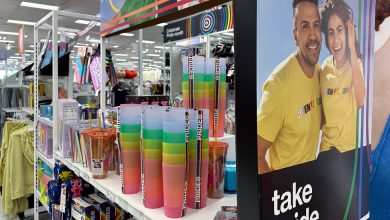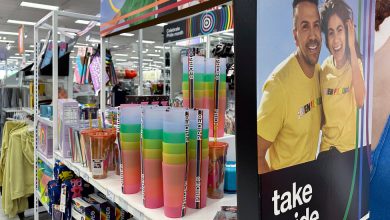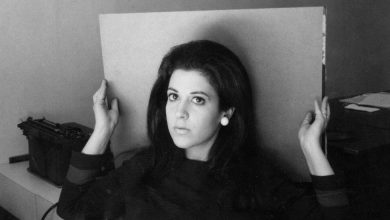For the First Time Ever, I’m Optimistic About Women in the Movie World

In a good movie year — and whatever you may have heard, 2022 was such a year — I find it an agony to compile a Top 10 list. There are just too many good and great films, too many titles that I want to celebrate. Being overwhelmed by a bounty of excellence is a pleasure, one that I often experience at film festivals. And lately, whether I’m at home or at a festival, I have been struck by how much of this abundance is from women onscreen and behind the camera.
We are experiencing a sea change with women and movies, a shift in numbers but also in consciousness. Female-driven movies, from women filmmakers and not, open weekly and are greeted as a matter of course rather than as aberrations; some dominate the box office, and a handful are enlivening the awards season. Despite continuing biases and barriers, women are now directing movies with a variety of budgets, topics and casts. It’s made my job as a critic more exciting.
It is, I learned long ago, demoralizing and alienating to watch film after film in which women watch men conquer worlds. And, yes, men continue to dominate American cinema. The producers and directors guilds have failed to nominate a single woman filmmaker for their latest awards, and on Tuesday the Academy Awards largely followed suit, although Sarah Polley’s “Women Talking” was a surprise best picture nominee. All the Top 20 domestic box office earners last year were directed by men, a gender imbalance that’s been the norm for a long time, notwithstanding exceptions like “Wonder Woman.” Yet what struck me about 2022 were the number of movies headlined and directed by women that made an impact, culturally and economically.
Women seemed to be taking the representational fight in every kind of movie last year, whether it was Michelle Yeoh tearing through “Everything Everywhere All at Once,” Keke Palmer running off with “Nope” or the metaphorically rich army of women warriors leading the charge in “Black Panther: Wakanda Forever.” There were more female fighters in Gina Prince-Bythewood’s adventure drama, “The Woman King,” which opened at No. 1 in September. The next weekend, filmgoers could catch “Don’t Worry Darling,” Olivia Wilde’s divisive freakout about a woman breaking free of brutally reactionary femininity. It too opened at No. 1; the next weekend, it was supplanted by “Smile,” a horror flick about a woman facing a demon.
I couldn’t remember when (or if) three female-led movies had topped the box office consecutively, so after “Smile” opened, I asked Tom Brueggemann, who tracks the box office for IndieWire. He established that the last time had been in 2009 with the release of “The Twilight Saga: New Moon,” “The Blind Side” and “The Princess and the Frog,” which features Disney’s first Black princess. “Frog” aside, these films aren’t especially memorable, and their stories are cut from shabby cloth. Yet taken together, their popularity suggested that something significant had started to shift in the movie world, even if only about a third of speaking characters in the Top 100 popular films were female, per one study.
SOMETHING ELSE HAPPENED in 2009: Kathryn Bigelow’s war movie “The Hurt Locker” opened to ecstatic reviews and decent box office, and was soon on the march toward the Academy Awards. Such campaigns are slogs, but this one paid off when in March 2010 Bigelow became the first woman to win best director. By the end of the night, she had a second Oscar when the movie won best picture, twin triumphs that brought many of us watching at home to our feet. I hate the Oscars when I don’t love them, but that night I swooned. Surely, I thought, this would change everything for women in the industry, forcing open doors and checkbooks. It didn’t exactly happen that way; I didn’t realize that change had already started sneaking in.

Kathryn Bigelow with her Oscar for best director in 2010. Change was already afoot.Credit…Matt Sayles/Associated Press
Soon after the Bigelow Oscars, as I think of them, I wrote about her and the industry’s history in an essay that was, effectively, a version of the same one I and other exasperated feminist film lovers have been writing forever. In the essay, I added this sentence from the Celluloid Ceiling, an annual report on women in film from the academic and researcher Martha M. Lauzen: “Women comprised 7 percent of all directors working on the Top 250 films of 2009.” My intention was for those numbers to serve as a stark, sobering reminder of Bigelow’s exceptionalism; now, though, the numbers make a stark contrast with the findings in Lauzen’s latest study, which found that in 2022 women accounted for 18 percent of directors working on the Top 250.
Another study released this month focuses only on the Top 100 domestic releases, which is generally where many of the biggest, priciest studio movies can be found. This study was from Stacy L. Smith and the U.S.C. Annenberg Inclusion Initiative, and it framed its findings fairly pessimistically. The Annenberg report noted there had been “small gains for women directors in popular films,” but it also, understandably, concluded that the pace of change had been slow. The flurry of news stories on the studies struck similarly downbeat notes, typified by Variety announcing “Failure to Change: Two Reports Examine Hollywood’s Lack of Progress Improving Diversity on Movie Sets.”
The data are irrefutable and inarguable. Egregiously, women, a population majority, remain a minority throughout the movie world for one reason and one reason only: discrimination based on sex, which has been illegal in the United States since 1964 but remains business as usual in the industry. Men continue to get more financing, more opportunities, more cool gigs, more second chances. Men also continue to fail upward and bore audiences with the same tired old stories. Yet what these truths and all the dispiriting statistics don’t reveal are other, subtler and more seismic changes that are difficult to quantify, changes that make me feel uncharacteristically optimistic about the state of the art and the industry both.
Some of my hopefulness can be traced to what took place between the 2009 study and the 2022 ones, because here’s what happened in addition to Bigelow winning her Oscars: “Bridesmaids” became a smash hit; Ava DuVernay became the first Black woman to win best director at the Sundance Film Festival; Pixar released “Brave,” its first movie with a female protagonist; “The Hunger Games” popularized a new American heroic prototype; “Frozen” was a monster hit and so was “Gravity”; DuVernay directed “Selma,” which was released by Paramount Pictures and was nominated for best picture at the Academy Awards — and while she didn’t receive a nod for best director, she answered that slight by building an entertainment empire.
Also! Angelina Jolie and Charlize Theron kicked butt; Melissa McCarthy and Amy Schumer made noise and bank; the “Star Wars” franchise was resuscitated with a female Jedi; the new, female-led “Ghostbusters” provoked a revealing misogynist backlash; “Inside Out” was a hit and made a lot of people cry, including the guy next to me who sobbed on his girlfriend’s shoulder; Viola Davis won a best supporting actress Oscar (for “Fences”); women called out Harvey Weinstein, who will likely die in prison; DuVernay made “A Wrinkle in Time,” the first movie with a $100 million budget directed by a Black woman; Nia DaCosta directed “Candyman,” becoming the first Black woman with a movie opening at No. 1; Chloé Zhao won an Academy Award for best director (“Nomadland”), the first woman of color to do so.
Despite these markers, my optimism may also seem surprising given the industry’s current state. It’s bad, very bad, we are repeatedly told. The rise of streaming and decline in theatrical attendance thrust the industry into another existential crisis even before the pandemic; it’s worse now. Theaters that survived the 2020 shutdown continue to struggle because studios are releasing a third fewer movies than they did pre-Covid and no one wants to go out unless it’s to watch another franchise blockbuster or horror flick. The art-house world, which depends on older audiences and scrounges for financial scraps, has been particularly hard-hit.
The situation is undeniably more complex, and it bears repeating that the movies have gone through — and survived — one disaster after another their entire history, whether the crisis was Thomas Edison’s efforts to monopolize moving pictures at the start of the 20th century, the midcentury rise of television, the decline of old Hollywood or the decline of New Hollywood. It’s an awful, difficult business. Yet while Americans have been getting out of the habit of regular theatergoing for decades and seem disinclined to change course any time soon (particularly during a pandemic), people still like movies whatever size the screen.
WOMEN HELPED INVENT CINEMA but were largely shut out of Hollywood as directors from the 1930s through the ’60s. Other women, mostly white, continued to star in films mostly directed by (white) men, a gendered division of labor that helped create deep-seated mental models: Women were to be looked at, to paraphrase the feminist scholar Laura Mulvey, while men belonged to the world of action, whether they were playing the hero onscreen or calling the shots behind the camera. A small group of independent women nevertheless managed to make off-Hollywood films decade after decade despite the cultural and economic odds, and the indifference, contempt and abuse of kingmakers and their mouthpieces, including in journalism.
The end of the old studio system with its galaxies of players under contract proved disastrous for women stars, and the macho ethos of New Hollywood that followed in its wake wasn’t always welcoming, though Barbra Streisand, Jane Fonda, Jill Clayburgh, Ellen Burstyn, Sally Field, Cicely Tyson and others did find juicy roles and acclaim. By the late 1970s, blockbusters like “Jaws” and “Star Wars” had ushered in a different, supersized mainstream business, one that filled the next decades with buddy movies and testosterone-charged blowouts. But both in Hollywood and away from it, handfuls of women like Elaine May, Barbara Loden, Joyce Chopra, Madeline Anderson and Julia Reichert were also making films. And while the rise of Indiewood brought us a lot of guys in baseball caps and the House of Miramax, it introduced new female stars and, in time, increasing numbers of women directors.
Change has since come to the movies, including, importantly, a change in consciousness about women and film. There has been a shift in “the mental horizons” of the age, to borrow a phrase from the French historian Lucien Febvre. Today, women receive directing offers and gigs that were once unimaginable, and the non-troll world seems to accept that women can star in all types of movies and that women can make movies, too. Journalists and civilians alike routinely call out the industry’s sexism, and they keep tabs on representation at studios and festivals. A newly resurgent feminism, social media, demographic change and convulsions in the business have all helped make this shift possible and so have the women directors, producers, agents, cinematographers, casting agents and many others who’ve done the hard work.
In the past, I have sometimes thought that while men are seen as auteurs, women are problems: Not long ago, the received industry wisdom was they couldn’t direct action flicks (as a female studio executive told me); they made chick flicks (a term often used condescendingly and pejoratively); and their box office triumphs were always a surprise (as innumerable news reports have insisted). This troublemaker rap hasn’t disappeared, of course, as is obvious from the false outrage that enveloped Wilde’s “Don’t Worry Darling” last year because she and her male star, Harry Styles, had become involved. It was clear to any thinking person that Wilde’s gender had helped turn that putative scandal into news. It was a dreary and bleak moment. Yet while once I might have gone out of my way to avoid panning a movie by a woman because of her unicorn status, I didn’t hesitate this time. True equality means that women should be able to succeed, fail and move on, just like men; they should be allowed to be as brilliant, flawed and human.
It can seem deeply unfair that more women and members of other marginalized groups have made inroads into this stubbornly exclusionary, historically racist and sexist business at a time when fewer people seem actually to care about movies. And, in truth, one reason women have been able to make inroads is precisely because the industry no longer resembles the highlycentralized, blindingly white, overwhelmingly male-dominated enterprise it was for decades, when independence was rare and the only power most women wielded in Hollywood was as stars. Oneperson’s crisis can be another’s opportunity, and women have continued to pushforward even as the rest of the movie world has flailed.
I know that my optimism may seem strange or counterintuitive or just wishful thinking. I get it. Not all that long ago, I thought it would be best if the entire machine blew up, that the big studios just got it over with and died, making room for others to build something different and better. Certainly the movie industry seems to be doing a fine job of self-combusting. Yet the truth is that despite the statistics and awards, the movie world looks different than it did 30, 20, even 10 years ago. The world looks different. There is, as I’ve suggested, no one reason for the shift in how we think about women and film, but it is a good and hopeful shift. Change has been slow. But change is here because women have followed their muses, honed their craft and heeded their voices no matter the hurdles before them and, in doing so, they have changed ideas about cinematic representation, about who gets to be the hero on set and onscreen. Bigelow, as she reminded me in a 2009 interview, had never made a studio film. Over the past decade, DuVernay has pursued a different path and found a way to work with the system while changing it. They and so many other women are making and remaking worlds in their own image.




